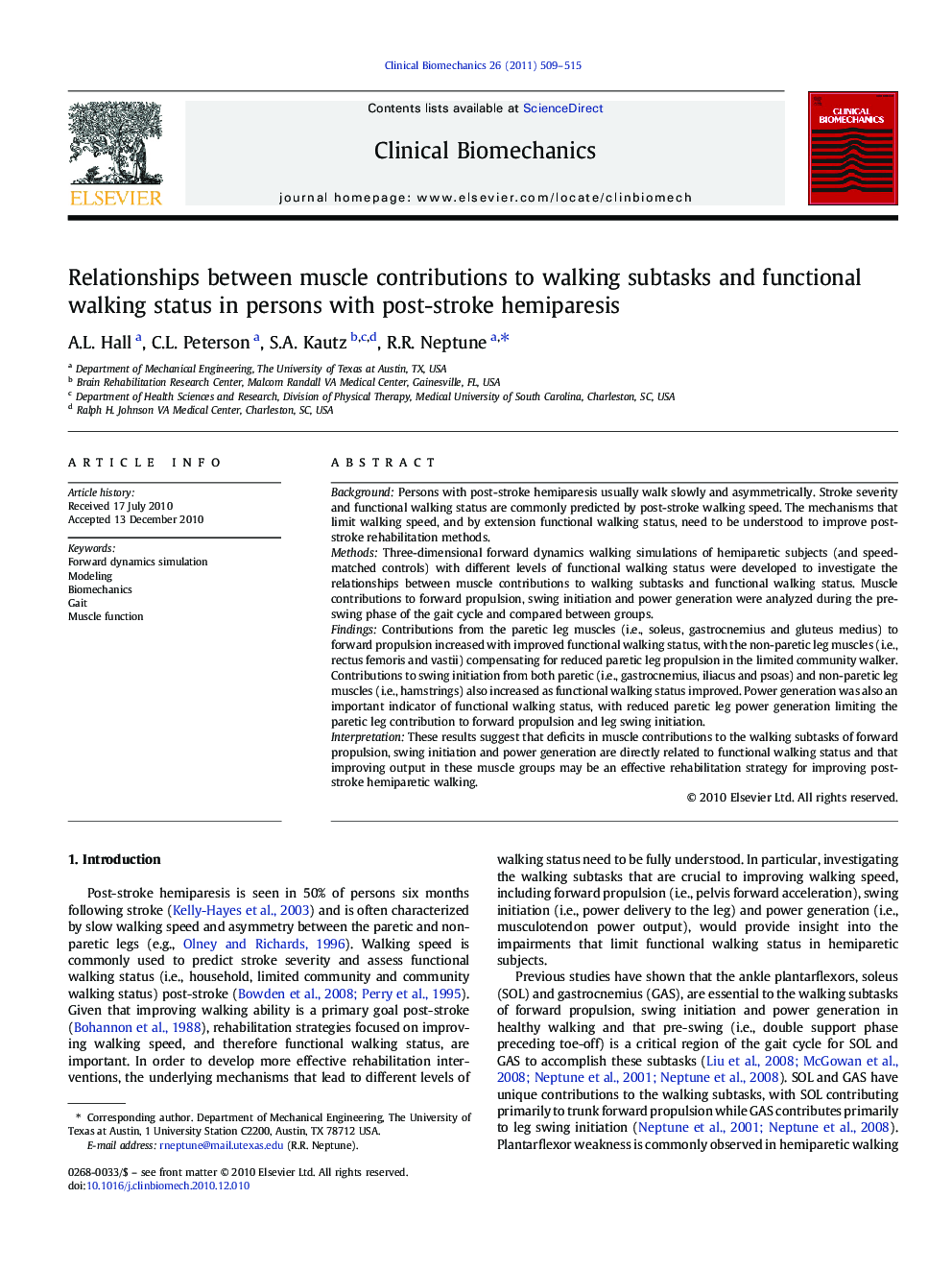| کد مقاله | کد نشریه | سال انتشار | مقاله انگلیسی | نسخه تمام متن |
|---|---|---|---|---|
| 6205094 | 1264941 | 2011 | 7 صفحه PDF | دانلود رایگان |

BackgroundPersons with post-stroke hemiparesis usually walk slowly and asymmetrically. Stroke severity and functional walking status are commonly predicted by post-stroke walking speed. The mechanisms that limit walking speed, and by extension functional walking status, need to be understood to improve post-stroke rehabilitation methods.MethodsThree-dimensional forward dynamics walking simulations of hemiparetic subjects (and speed-matched controls) with different levels of functional walking status were developed to investigate the relationships between muscle contributions to walking subtasks and functional walking status. Muscle contributions to forward propulsion, swing initiation and power generation were analyzed during the pre-swing phase of the gait cycle and compared between groups.FindingsContributions from the paretic leg muscles (i.e., soleus, gastrocnemius and gluteus medius) to forward propulsion increased with improved functional walking status, with the non-paretic leg muscles (i.e., rectus femoris and vastii) compensating for reduced paretic leg propulsion in the limited community walker. Contributions to swing initiation from both paretic (i.e., gastrocnemius, iliacus and psoas) and non-paretic leg muscles (i.e., hamstrings) also increased as functional walking status improved. Power generation was also an important indicator of functional walking status, with reduced paretic leg power generation limiting the paretic leg contribution to forward propulsion and leg swing initiation.InterpretationThese results suggest that deficits in muscle contributions to the walking subtasks of forward propulsion, swing initiation and power generation are directly related to functional walking status and that improving output in these muscle groups may be an effective rehabilitation strategy for improving post-stroke hemiparetic walking.
Journal: Clinical Biomechanics - Volume 26, Issue 5, June 2011, Pages 509-515